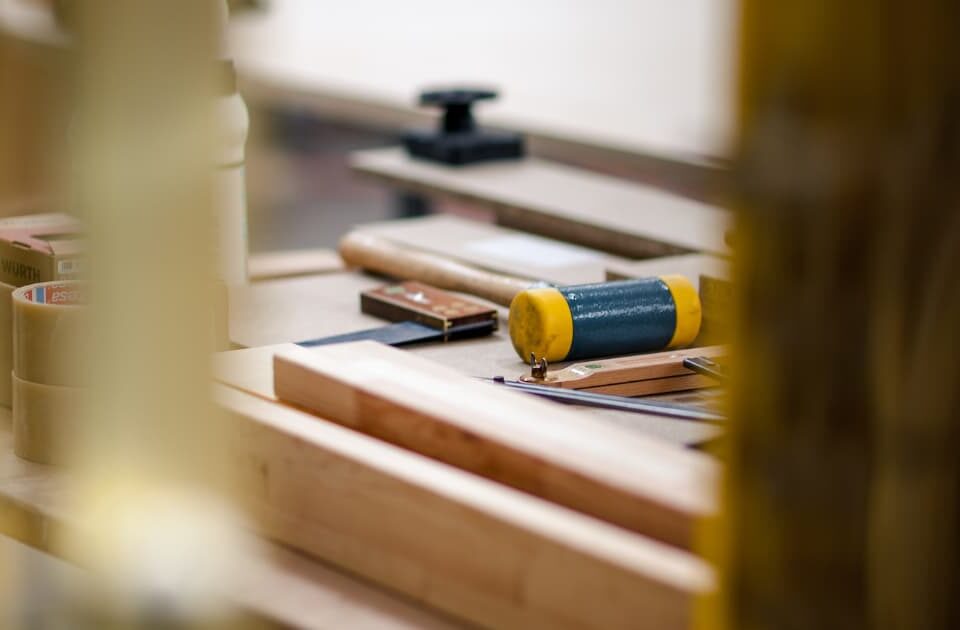Choosing the Ideal Kitchen Sink: A Mini Guide

Top Tips For Renovating Old Floors
26th December 2019
Top Interior Design Trends for 2020
16th January 2020Your kitchen sink is not only a practical feature within your home, but also an integral part of your kitchen design. With the increased popularity of dishwashers, kitchen sinks are not used as much as they once were, but they are still a vital component of any modern kitchen. Choosing the ideal sink for your kitchen is often something that is overlooked by many, but it is integral to achieving a smooth flow within the kitchen.
There are a few things to consider before you choose your next kitchen sink, and in this mini-guide, our experts are sharing their top tips and advice;
Kitchen Sink Basics: What to Consider
Before you can begin the search for the perfect sink, there are a few basic aspects you need to think about;
Size and Shape
Kitchen sinks come in all shapes and sizes, and it is essential you pick one that is both practical and compliments the overall design of your kitchen. Firstly, you will need to decide if you want one or two sinks in your kitchen. A single bowl sink is a good choice for kitchens which are lacking surface space. However, double bowl sinks offer more flexibility and are often more practical.
As well as this, the depth of the bowls needs to be considered. It is often important to find a balance between a deep sink that will take a long time to fill and be uncomfortably low, and a shallow sink that won’t adequately fit large pots and pans.
Tap Options
Many kitchen sink models that are inset will come with pre-drilled holes for taps to be fitted. This is great if your kitchen has wall space behind to mount a tap but can cause problems if the pre-drilled holes don’t fit with existing fittings. One common problem is for square taps to be chosen, only to find they don’t fit with the circular holes on the sink.
Fittings and Cabinets
Before getting your heart set on your new perfect sink, be sure to check out the minimum cabinet size. The majority of standard kitchen sinks will fit a 600mm cabinet. However, some larger sinks might need up to 1000mm.
Undercoat
A good kitchen sink should come with some form of undercoating. This is applied to the underside of the sink and provides protection from water and damp getting into the worktop. A good undercoating will also offer sound insulation to prevent the sink from being too noisy when in use.
Sink Mountings

The way your new sink is mounted into your kitchen is also important. Undermount sinks are a popular choice as they offer a streamlined look and are popular with solid worktops like granite. Inset sinks are often chosen because of their easy installation as the bowl simply drops into a hole in the work surface.
A downside of inset sinks is that they often result in a build-up of dirt around the raised edges. The type of sink mountings you choose will generally be determined by your kitchen design, your worktop material and your budget.
Sink Materials
There are a variety of options available when it comes to sink materials and there are a few things to consider about each before you decide which is best for you;
- Stainless Steel
Stainless steel is one of the most popular sink materials around. This is because it is extremely hardwearing, easy to clean and can withstand high temperatures. It often isn’t a very expensive option and can suit almost any budget. However, cheap stainless steel sink models can be affected by scratching or become deformed over time. You can also often choose between different finishes in stainless steel sinks, such as a polished, brushed or mirrored effect.
- Composite Sinks
These are a much more recent development and offer a range of choices. For the most hardwearing and durable composite sinks, then look for one with a high granite content or high quartz content. It is also possible for composite sinks to include antibacterial properties. This sink material offers a selection of different colour finishes so they can fit effortlessly into any interior kitchen design. More recent popular materials for composite sinks include copper, concrete and timber.
- Ceramic Sinks
Fireclay ceramic is a popular choice of sink material as it is easy to clean and very robust. These types of sinks are often fired at a really high temperature in order to fuse the clay to the glaze surface, making the finish extremely durable. One of the biggest drawbacks of ceramic sinks is that they can be prone to chipping and damage if heavy objects are dropped.




